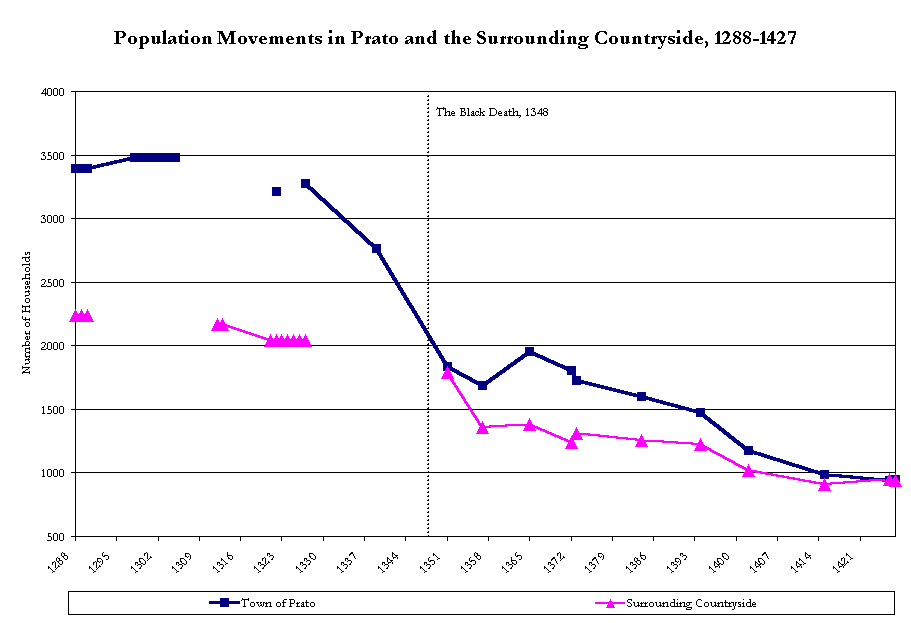
This chart shows the impact of demographic decline and plague on the town of Prato, a commercial center located 20 kilometers to the northwest of Florence, in Tuscany, and is based on a series of censuses taken for the purposes of taxation, beginning in the late thirteenth century. The y-axis records the total number of households tallied in each census. Taken together, they show stunning losses between 1300 and 1427; by the end of the period, the total population of Prato, both the town and the surrounding countryside, had shrunk to a mere 26% of its size at the outset, which reflects an annual average loss of population on the order of 1%. It also shows that the population had begun to fall before the arrival of plague in 1348: the drop-off begins already in the 1330s. It also shows that population decline was a long-term process: after a brief resurgence in the town of Prato following the plague, the decline continued unabated into the fifteenth century.